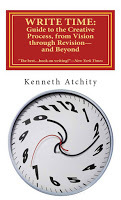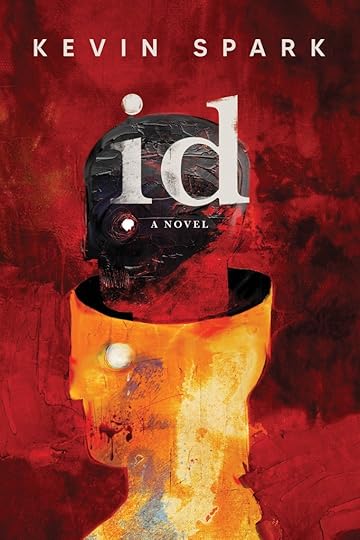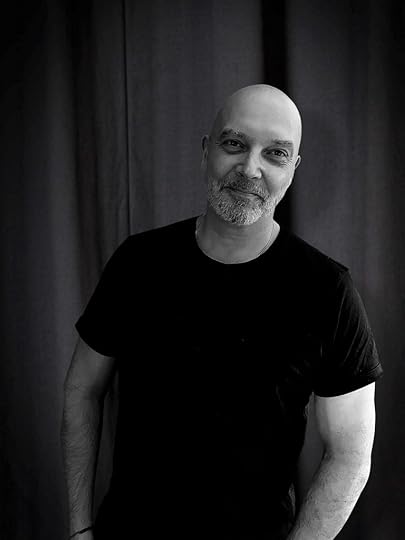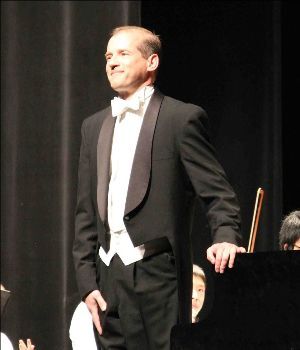Kenneth Atchity's Blog, page 35
April 14, 2023
Stealing Time for Your Dream

Jack Smith: “God created time so that everything wouldn't happen at once.”
Atchity: Then how come everything keeps happening at once?
Thrillionaires know that if you follow your dream, by definition, you can't fail. Success lies in the pursuit. If you have a dream, you have the responsibility to yourself and to the source of dreams to make it come true. That’s why Nik invented Thrillionaires, to help you make it happen.
But that means finding time to do what you have to do--the very opposite of "marking time." Our minds experience life on a timeline of their own invention, a continuum that stretches from our first moment of consciousness to our last. "The end of the world," said Bernard Malamud, “will occur when I die. After that, it's everyone for himself.”
And finding time for dreams in our accelerated world where we hear of "flextime," "time-elasticity," “the sweet spot in time," “virtual time,” “time shifting,” and "time slowing down” is more confusing than ever before. A little over a century ago, if you missed a stagecoach you thought nothing of waiting a day or two for the next one to come along. Today you feel frustrated if you miss one section of a revolving door! So many of today's "time-saving devices" prove to be frauds---requiring more time to select, install, maintain, and update than it used to take without them. It's hard to believe that a few short years ago we had not yet become addicted to email, voicemail, FAX machines, microwaves, VCRs, earphones, IPods, I Phones, blackberries. All these inventions, as helpful as they can be to your onboard Accountant’s output level, suck up our time in ways that, unless they are examined and acknowledged, become quite destructive to the realization of the dream. More and more demands are being made on our time. Faith Popcorn (The Popcorn Report) puts it this way:
We're pleading to the big time clock in the sky: "Give me fewer choices, far fewer choices. Make my life easier. Help me make the most of my most valued commodity--the very minutes of my life.”
Things have gotten so bad that we can¹t really manage time any more. We’re now forced to steal it, invoking the assistance of Mercury, messenger, salesman, trickster, and thief of the gods. Like any professional thief, Mercury insists on knowing as much as possible about the object of his theft and its natural habitat and characteristics before he goes into action. This series combines observations about the nature of time and work with practical suggestions about employing Mercury’s caduceus--that magic wand with the snakes entwined around it--to steal the time you need.
Kurt Vonnegut’s Bokonon: “Busy, busy, busy.”
Ecclesiastes: “Consider the ants. Yes, you are busy. What are you busy about?”
Our Puritanical upbringing has led the Accountant to want us to keep busy. “Idle hands are the devil’s workshop.” One day I was consulting with an attorney who, by everyone’s standards but his own, is quite successful. We were talking about forming a new marketing company. “Why do you want to do this?” I asked him.
“Because I want to get rich.” He added: “I have to stop selling my time.”
I nodded. “That’s interesting.” I was thinking of the reversible equation I’d written about in A Writer’s Time: “Time is money, money is time.”
“What brought you to this conclusion?” I asked him.
He told me that a self-made, wealthy, genius friend of his kept coming to California for a visit. Each time, he’d say, “You’re so smart--why aren’t you rich?” The attorney had no answer for him, but the question continued to gnaw away at him.
Finally, on one visit, the friend had to sit in the attorney’s law office for an hour waiting for him to complete some phone calls. He observed what was happening in the office.
On their way to lunch, his friend said: “You know that question I’ve been asking you all these years?”
“Yeah, of course I remember it--it drives me crazy. If I’m so smart, why aren’t I rich?”
“I know the answer now.”
“Tell me.”
“You’re too busy to be rich.”
Doing the wrong things, no matter how fast, or how well, you do them, or how many of them you do, will not advance your dream. One of my partners put it this way: “Don’t confuse efforts with results.”
Those who break out of busy work and into the success they’ve dreamed of have learned to redefine time. If you recognize that time is merely a concept, a social or intellectual construct, you can make the clock of life your clock; then determine what you do with it. More than the quantity of activities or completed projects I’ve experienced in my various career transits, what I value most is the quality of time I’ve managed to steal from all those committees and examination-grading sessions. When someone asked me years ago to make a list of “things I do that I don’t enjoy” I was happy to realize that it was difficult to think of anything other than my two or three hours per week of desk work that I didn’t thoroughly enjoy. Then I found a way of enjoying desk work, too! By hook or crook, you need to steal the right kind of time for your dreams.
[first in a 5-part series] next: “What is time?”
April 12, 2023
Ken Atchity Quotes...
― Kenneth Atchity, Write Time: Guide to the Creative Process, from Vision through Revision-and Beyond


Available on Amazon
April 7, 2023
The Daily Routines of Famous Creative People

The daily life of great authors, artists and philosophers has long been the subject of fascination among those who look upon their work in awe. After all, life can often feel like, to quote Elbert Hubbard, “one damned thing after another” -- a constant muddle of obligations and responsibilities interspersed with moments of fleeting pleasure, wrapped in gnawing low-level existential panic. (Or, at least, it does to me.) Yet some people manage to transcend this perpetual barrage of office meetings, commuter traffic and the unholy allure of reality TV to create brilliant work. It’s easy to think that the key to their success is how they structure their day.
Mason Currey’s blog-turned-book Daily Rituals describes the workaday life of great minds from W.H. Auden to Immanuel Kant, from Flannery O’Connor to Franz Kafka. The one thing that Currey’s project underlines is that there is no magic bullet. The daily routines are as varied as the people who follow them– though long walks, a ridiculously early wake up time and a stiff drink are common to many.
Read more
March 31, 2023
With Coaching Client Ken Orman and his actor wife Morgana Shaw at the Academy Museum
“Your Shrinks Might Need to be Shrunk” (by Dennis Palumbo) For ELLERY QUEEN'S MYSTERY MAGAZINE!

It’s been more than twenty years since Dennis Palumbo’s fiction has appeared in EQMM. In the meantime, he’s been busy with a series of novel-length thrillers featuring Daniel Rinaldi, a psychologist who consults with the Pittsburgh Police (the latest is Head Wounds, from Poisoned Pen Press), and his short stories have been collected in From Crime to Crime (Tallfellow Press). A former Hollywood screenwriter (My Favorite Year; Welcome Back, Kotter, etc.), Dennis is himself a licensed psychotherapist, and in this post he talks about some misconceptions many mystery writers and readers have about the usefulness of psychological diagnoses in solving crimes. —Janet Hutchings
As a former Hollywood screenwriter, now a licensed psychotherapist and mystery author, I have more than a passing interest in how therapy is portrayed on screen and on the page. That said, I’ve noticed that in recent years, whether in some best-selling crime thriller or on your average procedural TV drama, the therapists depicted are usually pretty quick-on-the-draw when it comes to diagnosing characters in the story.
For example: To explain a suspect’s behavior to the investigating detectives, shrinks in these novels and TV series toss out easily-digestible diagnoses like “psychopathic,” “schizophrenic,” or “borderline personality disorder.” As if these terms explained everything the cops (and readers or viewers) needed to know about the person being discussed. In my view, not only is this lazy storytelling (psychological symptoms taking the place of character development) but it’s clinically debatable.
The problem starts with the DSM (the Diagnostic and Statistical Manual of Mental Disorders). Used as the premiere diagnostic bible by mental-health professionals worldwide, the DSM has been predominately responsible for the labeling of an individual’s behavior, in terms of whether or not it falls within the range of agreed-upon norms. As such, it’s been both praised and reviled over the years. Praised because of its concise descriptions and categorizations of behavioral symptoms; reviled because of its reinforcement of stigmatizing attitudes towards those whose behavior is deemed “abnormal.”
In fact, there’s an old joke about how clinicians use diagnostic labels to interpret their patients’ behavior. If the patient arrives early for his therapy appointment, he’s anxious. If he’s late, he’s resistant. And if he’s on time, he’s compulsive.
Nowadays, however, it’s becoming clear that the joke may be on us. Diagnostic labels are thrown around quite casually by people who ought to know better (therapists on TV news programs) as well as by people who usually don’t (writers of mystery novels and procedural crime shows).
For the latter, it’s perfectly understandable. With rare exceptions, most writers depend on research—and such tools as the DSM—to provide their psychologist and psychiatrist characters with the right lingo. This not only makes these characters sound like the mental-health professionals they’re supposed to be, but it also allows the writer to describe the bad guy’s psychological problem in a way that the reader understands. Plus it makes the shrink character seem wicked smart.
However, as I said, it can also lead to lazy storytelling. In too many mysteries and thrillers nowadays, the shrink character need only say that someone’s a psychopath and—in an instant—a whole series of inexplicable or horrendous behaviors are explained away. To the question of why the bad guy did what he did, the answer is simple: he’s crazy.
In other words, so much for developing a vivid, relatable backstory for this character. Or creating a motive that makes sense. Or for acknowledging, as the author should, that most people are too complicated to be reduced to a set of easily determined symptoms.
Which is why I feel that crime writers—especially those who make use of therapists in their stories, either as protagonists or “experts” brought in to help the hero or heroine—need to take care not to use a one-size-fits-all model of diagnosis when it comes to describing a character in the story.
(There’s another problem with this, one which I think writers need to be aware of. Diagnostic labels, like practically everything else nowadays, follow the dictates of trends. Remember how, not too long ago, every other child was diagnosed with ADHD [Attention Deficit Hyperactivity Disorder]? Or Asperger’s? Well, forget about those. Now the “hot” new label, regardless of age, is bipolar disorder [what used to be called manic-depression]. Lately, whether you’re a movie star, teen heartthrob, politician, or athlete, you’re not cool if you’re not bipolar.)
Not that there’s anything wrong, per se, with labels. Nor with the idea of a common vocabulary so that all us clinical geniuses can communicate with each other. It’s just that, if we’re speaking honestly, diagnostic labels exist primarily for the convenience of the labelers. Which is fine, as far as it goes. But how far is too far? Especially for crime writers?
In my opinion, “too far” is when authors give their therapist characters an almost clairvoyant ability to declare (with God-like conviction) what’s going on in the mind of some suspected bad guy. Because, as any working mental health professional will tell you, facile, off-the-cuff interpretations of a patient’s psychological state rarely end up being accurate. And can even do great harm.
Once, when asked how he worked, Albert Einstein replied, “I grope.” Frankly, that’s what most good therapists do, too. They grope. That is, if they truly respect the therapeutic process—and their patients.
In my own series of mystery thrillers, my lead character, psychologist and trauma expert Daniel Rinaldi, does a lot of groping. Trying to make sense not only of his patients, or some suspect for which the Pittsburgh Police are seeking his expertise, but of himself, too. His own motives, prejudices, needs.
As a therapist in private practice for over 28 years, I’ve grown to appreciate the vast differences in temperament, relationship choices, communication styles and beliefs of my patients—and how these translate into behaviors, both healthy and harmful. Which means I’ve been forced many times to challenge the orthodoxy of my own profession, and to pay attention to the potential danger of reducing people to a simple diagnostic category.
I think all of us who write mysteries owe our various suspects and bad guys the same consideration. As well as try to keep our shrink characters’ smug, self-congratulatory opinions in check.
After all, despite being fictional, they’re still only human.
March 29, 2023
G.K. Chesterton: 'The Inside of Life.'

"We read a good novel not in order to know more people, but in order to know fewer. Instead of the humming swarm of human beings, relatives, customers, servants, postmen, afternoon callers, tradesmen, strangers who tell us the time, strangers who remark on the weather, beggars, waiters, and telegraph-boys--instead of this bewildering human swarm which passes us every day, fiction asks us to follow one figure (say the postman) consistently through his ecstasies and agonies. That is what makes one impatient with that type of pessimistic rebel who is always complaining of the narrowness of his life and demanding a larger sphere.
Life is too large for us as it is: we have all too many things to attend to. All true romance is an attempt to simplify it, to cut it down to plainer and more pictorial proportions. What dullness there is in our life arises mostly from its rapidity; people pass us too quickly to show us their interesting side. By the end of the week we have talked to a hundred bores; whereas, if we had stuck to one of them, we might have found ourselves talking to a new friend, or a humorist, or a murderer, or a man who had seen a ghost."
~ G.K. Chesterton: 'The Inside of Life.'

Author David Angsten
davidangsten.blogspot.com
March 27, 2023
Author Anthony Avina Reviews Kevin Spark's novel id! #FREE on Amazon this Week!
" This was a mind-blowing and thought-provoking psychological horror thriller. The imagery played well into the deep-set tone that psychological horror novels often take..." Anthony Avina
The Synopsis
 A psychologist and daughter of a murderer develops a revolutionary test to explore the id unencumbered by morality and sets a killer and the cop driven to violence by that same killer on a path of destruction in author Kevin Spark’s “id: A Novel”.
A psychologist and daughter of a murderer develops a revolutionary test to explore the id unencumbered by morality and sets a killer and the cop driven to violence by that same killer on a path of destruction in author Kevin Spark’s “id: A Novel”.Dr. Shelly, a brilliant psychologist, forever haunted by her father and his murderous past, is driven by the need to find out why we do the things we do? Is the concept of free will just a concept and nothing more, a construct that blinds us to a less palatable truth, that who we are is predetermined and encoded at birth? Does anyone really choose to do the bad things we do or are we just doing what comes naturally?
Shelly constructs an experiment using a sensory deprivation tank and virtual reality, allowing the darkest part of ourselves, the id, to run free. Unencumbered by morality or remorse, Shelly finds the perfect subject in Adam. A borderline psychotic born into a world of neglect and crime. Delving into the deepest pits of his subconscious, Shelly surfaces with far more than she bargained for.
Detective Hopper, responsible for Adam’s capture, remains a broken man. After suffering a breakdown due to the escalation of his own violent behavior, he is placed under the care of Dr Shelly. Encouraging him to go looking for his own redemption, Hopper becomes a pawn in her web of deception until the lines of reality are redrawn as Hopper and Adam come full circle to an explosive end.
The ReviewThis was a mind-blowing and thought-provoking psychological horror thriller. The imagery played well into the deep-set tone that psychological horror novels often take, and the inclusion of VR gaming environments and sensory deprivation tanks helped elevate the tension that the reader felt as the story progressed. The way these psychological ids came to life in the story and the way they spoke to the psychological aspects of our own minds helped elevate the atmosphere of this book tenfold.
Yet it was the rich character development that really helped highlight this psychological horror. The way each of the main characters really played off one another in this almost cat-and-mouse style thriller and the steady pace of the narrative itself allowed the tension to build more and more as time went on. The way the author explored the “animal” that rests within us all and the ways in which we all deal with that animal in our lives played well into the story, and the heart-pounding terror that the imagery of these character’s ids brought to life will haunt readers well beyond the final pages of this book.
The VerdictHaunting, captivating, and engaging, author Kevin Spark’s “id: A Novel” is a must-read psychological horror thriller. The twists and turns the narrative takes and the shocking conclusions that each character finds themselves in only lend themselves to the dynamic atmosphere and chilling imagery the author’s impressive writing style conjures up, drawing me in similarly to the way the acclaimed film The Cell starring Jennifer Lopez and Vincent D’Onofrio did when I first watched it. If you haven’t yet, be sure to grab your copy today!
Rating: 10/10

Kevin Spark
March 24, 2023
3 Things Every Great Story Has To Have by Dr. Ken Atchity

Film Courage: What three things does a great story have to have?
Dr. Ken Atchity, Author, Publisher, Producer: What three things? Well, it has to have a hook that gets people instantly involved in the story and that’s a huge part of the story itself. And it’s got to have a very strong character in the story that you care about and other than that, it has to have twists and turns that lead to a surprise ending. If I had to just say three things, I guess that’s what I would say the three things are. Every story needs that because a story about nothing is not going to hold anyone’s interest.
And sometimes writers when they begin their careers think that if they just write, they can write about anything but the truth is they need to write from their heart about things that matter to everyone and if they do that, you can hardly go wrong. Because stories are really not about words or word choice or anything like that. They’re about conveying the power of a character facing a dilemma that you have no idea how he or she will resolve and when you do that you’ve got everyone’s attention.
And in ancient times there was a thing called The Oral Tradition which I used to teach as a professor of Homeric Greek. The Iliad and the Odyssey were sung at campfires and everyone in the culture knew the stories. We are publishing a book right now on Homeric song and how it worked and how it held culture together. And my first book those…I call those stories the shield of memory and it was because of those stories that a person knew how to deal with himself in battle or when facing an attacking boar or when facing an angry wife or when facing pillagers trying to burn down his village. He would instantly think of the story of Heracles who did this or that or the story of Aegean who did this and that and that’s all they had. They didn’t have books for learning. It was all passed along through the oral tradition. And I think stories have never failed to play that role in human life and when you think about it you know “What’s your story?” is probably the most human response to any encounter and it goes from the court of law where the jury is trying to decide which of the two stories do they believe, to a political campaign where the voters are making that decision, to a first date where you are going “Do I believe his story? I just don’t believe it? I can’t buy his story?” That’s the ultimate human turn down, you can’t buy the story. And it goes through everything. Advertising is conveying stories that people will want to buy the product. This is how humans operate on a daily basis so to me it’s absolutely amazing that an industry has been created where people will pay millions of dollars for stories and where stories can basically conquer the world and I believe unite the world.
I mean look at all the work we are now doing with China in the movie business. I just saw Lara Croft in Tomb Raider (the new version of it) where the male lead is Chinese and she is Western and clearly as a producer I’m watching it going “This was a Chinese financed movie,” because I understand how it works for the market…(Watch the video interview on Youtube here ).
March 21, 2023
Frank Center Lobby dedication to Scott Beard - April 1st!

ROBERT SCOTT BEARD
1964-2021

View this email in your browser
Whether showcasing his students or performing at the piano himself, Dr. Scott Beard practically lived in the Frank Center for over a decade before transitioning to Administration, Many of you know he was a consummate neat freak. As such, he strove to ensure that the lobby and the hallways looked their best, because he understood that the Frank Center was often the first impression for visitors to the campus. But what many of you didn't know was that maintaining that image often meant cleaning, scrubbing and vacuuming it himself.
So, I felt it was a fitting tribute to him that we refurbish the lobby in his name. President Mary JC Hendrix agreed, and I thank her for her support, as well as the contributions of everyone on the Shepherd University staff who had a hand in the remake of this integral part of the University's soul. I also thank especially, our good friends, Kenneth and Vicki Wilson for their additional financial support,
Featured at the Dedication will be pianist Dr. Jason Solounias, a Shepherd alumnus and one of Scott's most accomplished and successful students, who will perform a few of Scott's favorite pieces.
Following the Dedication ceremony at 6 pm, Shepherd University will present the annual Musical Showcase, which Scott, Marcia Brand, and I started to raise money for music scholarships.
There is an admission for that concert, but you may attend the Dedication without an obligation to attend the Musical Showcase.
March 20, 2023
Write Your Novel to Be a Film by Kenneth Atchity

Novelists seeking representation complain that none of their books have been made into films. At any given moment, we have literally stacks of novels from New York publishers on our desks in Los Angeles. Going through them to find the ones that might make motion pictures or television movies, we — and other producers, managers, and agents — are constantly running into the same problems:
“There’s no third act... It just trickles out.”
“There are way too many characters and it’s not clear till page 200 who the protagonist is.”
“I can’t relate to anyone in the book.”
“At the end, the antagonist lays out the entire plot to the protagonist.”
“There’s not enough action.”
“There’s nothing new here. This concept has been used to death.”
“We don’t know who to root for.”
“The whole thing is overly contrived.”
“There’s no dialogue, so we don’t know what the character sounds like.”
“There’s no high concept here. How do we pitch this?”
“There’s no real pacing.”
“The protagonist is reactive instead of proactive.”
“At the end of the day, I have no idea what this story is about.”
“The main character is 80, and speaks only Latvian.”
“It’s set in Papago...in the 1960s, and is filled with long passages in Uto-Aztecan.”
“There are no set pieces.”
Of course anyone with the mind of a researcher can list a film or two that got made despite one of these objections. But for novelists who are frustrated at not getting their books made into films, that should be small consolation and is, practically speaking, a useless observation. Yes, you might get lucky and find a famous Bulgarian director, who’s fascinated with the angst of octogenarians, studied pacing with John Sales or Jim Jarmusch, and loves ambiguous endings.
But if you regard your career as a business instead of a quixotic crusade, you should be planning your novel from the outset to make it appealing to filmmakers.
Give us a strong (preferably male) lead who, good or bad, is eminently relatable — and who’s in the “star age range” of 35-50 (where at any given moment 20 male stars reside; a star being a name that can set up the film by his attachment to it).
Make sure a dramatist looking at your book will clearly see three well-defined acts: act one (the setup), act two (rhythmic development, rising and falling action), and act three (climax leading to conclusive ending).
Express your character’s personality in dialogue that distinguishes him, and makes him a role a star would die to play.
Have someone in the film industry read your synopsis before you commit to writing the novel.
Though I’ve observed the phenomena for several decades now, it still surprises me that even bestselling novelists, even the ones who complain that no one has made a film from their books yet, don’t write novels dramatic enough to lend themselves easily to mainstream film. It’s a well-known phenomenon in publishing that, with very few exceptions, the more books a novelist sells the less critical his publisher’s editors are of his work. So time and again we read novels that start out well, roar along to the halfway point, then peter off into the bogs of formless character development or action resolution.
A publisher invests between $25,000 and $100,000 or more in publishing your novel. A low-budget feature film from a major Hollywood studio today costs at least $40 million. There is, from a business point of view, no comparison. Risking $40 million means the critical factor is raised as high as can be imagined when your book hits the “story department” — much higher than the critical factor of even the finest publishers. Hollywood studies what audiences want by logging, in box office dollars, cents, and surveys, what they respond best to.
If you want to add film to your profit centers as a novelist, it would behoove you to study what makes films work. Disdaining Hollywood may be a fashionable defense for writers who haven’t gotten either rich or famous from it, but it’s not productive in furthering your cinematic career.







